 Open Access
Open Access
ARTICLE
Improving QoS Using Mobility-Based Optimized Multipath Routing Protocol in MANET
1 Department of Computer Science, Periyar University, Salem, 636011, India
2 PG and Research Department of Computer Science, Government Arts and Science College, Kangeyam, 638108, India
* Corresponding Author: S. J. Sangeetha. Email:
Computer Systems Science and Engineering 2023, 46(1), 1169-1181. https://doi.org/10.32604/csse.2023.033392
Received 15 June 2022; Accepted 27 August 2022; Issue published 20 January 2023
Abstract
Mobile Ad-hoc Networks (MANETs) connect numerous nodes to communicate data from the sender node to the target node. Due to the lack of an infrastructure network, mobile nodes communicate through wireless without an access point. MANET does not have a centralized controller and has a dynamic network topology, which increases link failure and energy consumption resulting in excessive path delay, loss of Quality of service (QoS), and reduced throughput during data communication. Congestion is a significant problem when the QoS of the link carrying the data is degraded. Routing is one of the vital challenges of MANET due to the very dynamic and distributed nature of MANET. This article introduces a Mobility-Based Optimized Multipath Routing Protocol (MBOMRP) and an Efficient Reliable Link-State Transmission (ERLST) algorithm to overcome these problems. The proposed Mobility-Based Optimized Multipath Routing Protocol (MBOMRP) is utilized for route discovery and maintenance to efficiently avoid traffic and sleeping nodes. ERLST algorithm is used for efficient data transmission to increase QoS measurement parameters like throughput, Packet Delivery Ratio (PDR), and minimize the latency performance. The proposed MBOMRP-ERLST algorithm improves data communication network lifetime, avoids link failures, and provides efficient results compared with previous algorithms.Keywords
MANET is a broadcast network that does not need centralized control. Today, MANET is famous for its rapid deployment, cost-effectiveness, lack of base stations, infrastructure, and self-management. MANET contains numerous mobile nodes that transfer directly with a wireless connection through the adjacent node. Usually, MANET mobile nodes are battery-powered and can roam freely, consuming their energy or leaving without notifying cooperative nodes. A wireless network node can join or exit anytime, and each node communicates. Beyond that, communication is established by engaging a hop-by-hop path with the intermediate node.
All nodes act as routers to each other, and packets are forwarded between the nodes in a multi-hop manner. For mobility, the routing information needs to be modified to reflect the changes in the link connection. Routing selects paths within a network to send essential data from the sender node to the target node. Routing is one of MANET’s most significant challenges, as developing routing support is vital for basic network operations. The variety of ad hoc mobile devices also means that these devices have different battery capacities. Energy consumption is important because ad hoc networks rely on packets sent from other nodes.
The routing mechanism specifies how routers communicate the information and allows protocols to choose routes among two nodes in the network. Mobility in mobile nodes in the transient network can move uncontrollably, resulting in more powerful networks with rapid topographic changes, often resulting in routing failures. The proposed routing table contains node information in the MANET network for path analysis. For every node, keep up a routing table containing multiple routing accesses during data transmission. If the packet is destined for a particular node, the packet looks in the routing table to discover the target node’s address. In this research propose an MBOMRP scheme to route discovery and avoid traffic and sleeping nodes. The proposed ERLST technique is used for data transmission to increase QoS performance. The contribution and motivation of this paper present MBOMRP-ERLST techniques to control the traffic and minimize latency and energy consumption. The proposed method enhances throughput, PDR, and network lifetime.
MANET increases energy expenditure and delay during real-time traffic multicast. The node with the maximum remaining energy, bandwidth accessibility, and connectivity is selected as the Cluster Head (CH) using Bandwidth Aware Clustering Routing Algorithm (BACRA) [1]. Based on BACRA technology, CH is the group leader in the recommended short-path multicast tree, and members are the leaf nodes. That method helps send multimedia data to various receivers.
Energy harvesting (EH) capabilities are also involved in routing, and node EH capabilities are used to prolong the life of the entire network utilized Constructive Relay-Based Cooperative Routing [2]. The routes are only established when data needs to be sent, but Proactive can preconfigure and manage the collaboration topology locally for all source-to-destination pairs.
In multi-hop MANET, nodes cooperate to relay traffic and reach remote nodes on their behalf. Therefore, MANET must provide the QoS required to send real-time data that requires QoS routing to improve the user’s Quality of Experience (QoE) [3]. This study presents a Multi-Path Transmission Control Protocol (MPTCP) based data transmission model with QoE-driven MANET to realize reliable and efficient multipath data transmission with MANET.
The novel develops a simple Obstacle-Aware Algorithm (OAA) to deal with the existence of polygon barriers. Here, the presence of a fixed polygonal barrier breaks the link to the destination and allows the path to be reset internally without starting a new route search process [4]. A distinct node grade is designated beside the Bezier route through the suggested OAA method and directs the data to the destination in a route failure.
Hybrid Secure Multipath Routing Protocol (HSMRP) can shrink the packet loss rate because it has multiple routes. Multipath routing helps to minimize damaged packets and the effects of malicious attacks while routing [5]. When looking for HSMRP routes, finding the best route from various routes is advisable. But this algorithm provides high latency during data transmission. The study proposes a Particle Swarm Optimization (PSO) system for choosing the path with the most increased packet transmission size on the critical node from multiple ways [6]. The suggested PSO-based Lifetime Prediction Routing (LPR) approach predicts network lifetime.
The Energy Efficient Multipath Routing Protocol (EEMRP) floods routing requests that learn multiple paths to their destination and forward packets through them [7]. This optimization looks for two constraints to indicate the most acceptable path. One is the energy level of the pass, and the other is the pass detachment. However, this method didn’t provide the network’s life and high energy consumption.
Clustering routing protocol helps overcome problems, improves data transfer quality and improves network scaling [8]. The study uses the Graph Kernel-Based Clustering Algorithm (GKBCA) based CH to deliver a consistent way to connect mobile nodes and efficiently assign resources for information broadcast. The primary function of MANET is to divide large networks into smaller subgroups and use the GKBCA-based hierarchy to connect them.
The author develops a Loose Virtual Cluster-based routing protocol (LVC) for MANETs. The suggested protocol is companionable thru the IEEE 802.11. The LVC considers the characteristics of a double-edged sword with high power nodes [9].
A clustering routing is an efficient mode of data transmission among nodes in the network based on self-organizing clustering using Zone-based grouping for MANET. Using a deployed network environment can raise the overall measurement of the network and offer strength [10]. CH has access to all membership nodes and manages the cluster.
The study proposes a Lifetime prediction-based routing protocol that uses the expected lifetime to compute the optimal path among the sender and target nodes [11]. However, the protocols aim to find ways that allow packets to be forwarded energy-efficiently. It can significantly overload these service nodes and quickly run out of energy.
The study proposes Link-Stability and Energy-Aware Routing Protocol, the best model within MANET. The suggested approach chooses a single transmission path; the model attempts to moderate the power intake of the mobile nodes while increasing the connection stability of the transmission [12]. It is advisable to consider both power consumption and connection stability. Most routing protocols use wireless bandwidth and choose shortcuts to improve path stability.
The study focuses on improving wireless network performance in line with wired network performance using Congestion Avoidance through Cooperative Routing (CACR). When it detects the flag’s presence, it triggers CACR to send the packet [13]. CACR is built on the notion that each node in the network can calculate the number of hops a particular transmission.
The initial energy of each node is low, and it is essential to minimize energy consumption and balance the remaining energy. The author introduced MANET’s EERA-based Learning Automata (LA) theory [14]. This study constructs a MANET environment using the LA theory. The MANET environment feedback mechanism allows for choosing the optimum path from the sender to the receiver.
Each node has a routing function, which allows the arbitrator node to forward and render packets. If the two nodes are within range of each other, then the two nodes are in direct communication [15]. The author proposes a Genetic algorithm (GA) method that deliberates energy consumption and latency of routing. The multipath routing protocol allows the sender node to choose the best path from multiple paths in a single pathfinding process [16]. This multipath routing process reduces the number of paths finding processes until the routing pool is available. The study proposes a new exercise function for GA, an optimization technique for obtaining optimal routes from source to target node.
Optimizing energy consumption in MANET is a recently developed area of research emphasizing the benefits of biomimetic algorithms and their optimization capabilities. EHO-AOMDV is an energy-efficient multipath routing protocol in [17]. The EHO is primarily used to enhance node energy and divide the node population into two tribes according to node energy. The nodes are structured as the first tribe and the other nodes as the second tribe, exceeding the total number of pockets required for the power to be transmitted through the node.
The Adaptive on-Demand Multipath Routing Protocol (ADMRP) is used to discover the alternate route to offer highly reliable network services for networks with dynamic topology modifications. With ADMRP, backup paths [18] can be used for fast-path switching and restarting data transfer after a node and connection has failed. In addition, it offers load balance, fault tolerance and total bandwidth. ADMRP allows selecting the best path to send data to support QoS by comparing the available resources of the nodes with different paths. The impact of node density on MANET networks with varying numbers of voice traffic nodes has several effects that may help understand the impact of node density on QoS [19].
MANET is a wireless network connection to transmission packets within range to improve connectivity and facilitate communication. Using the Link-disjoint multipath routing protocol, the sender node sends the active path value to each neighbouring node during the route keep phase [20]. Calculated probabilities are used to find alternative paths in the network. Nevertheless, this study provides high latency, energy consumption, and low packet delivery performance.
The existing algorithm PSO, Multi-Factor QoS (MFQoS), and Flexible Route Based Congestion Avoidance (FRBCA) methods ignore node congestion, and routing is a significant problem. It causes more connection failure and power consumption.
This section explains the Mobility-Based Optimized Multipath Routing Protocol and an Efficient Reliable Link-State Transmission (MBOMRP-ERLST) for improving the Quality of Service (QoS) in MANET. The proposed framework minimizes the energy consumption and link failure of sending and receiving packets at a mobile node communication. The proposed MBOMRP-ERLST framework focus on selecting available paths with high residual energy and low energy usage. It avoids link failures due to node energy exhaustion, extending network life and improving MANET energy performance.
Here, we introduce the proposed framework for selecting the optimal route for data transmission based on link reliability and path availability of communication. The proposed MBOMRP-ERLST approach allows selecting the correct set of mobile nodes. It is used to avoid obstacles and efficiently select routes for data transmission from a sender node to a receiver node for enhancing QoS present in Fig. 1. We propose an MBOMRP scheme to route discovery and avoid traffic and sleeping nodes. The proposed ERLST technique is used for data transmission to increase QoS performance. This paper presents MBOMRP-ERLST techniques to control the traffic and minimize latency and energy consumption. The proposed method enhances throughput, PDR, and network lifetime.
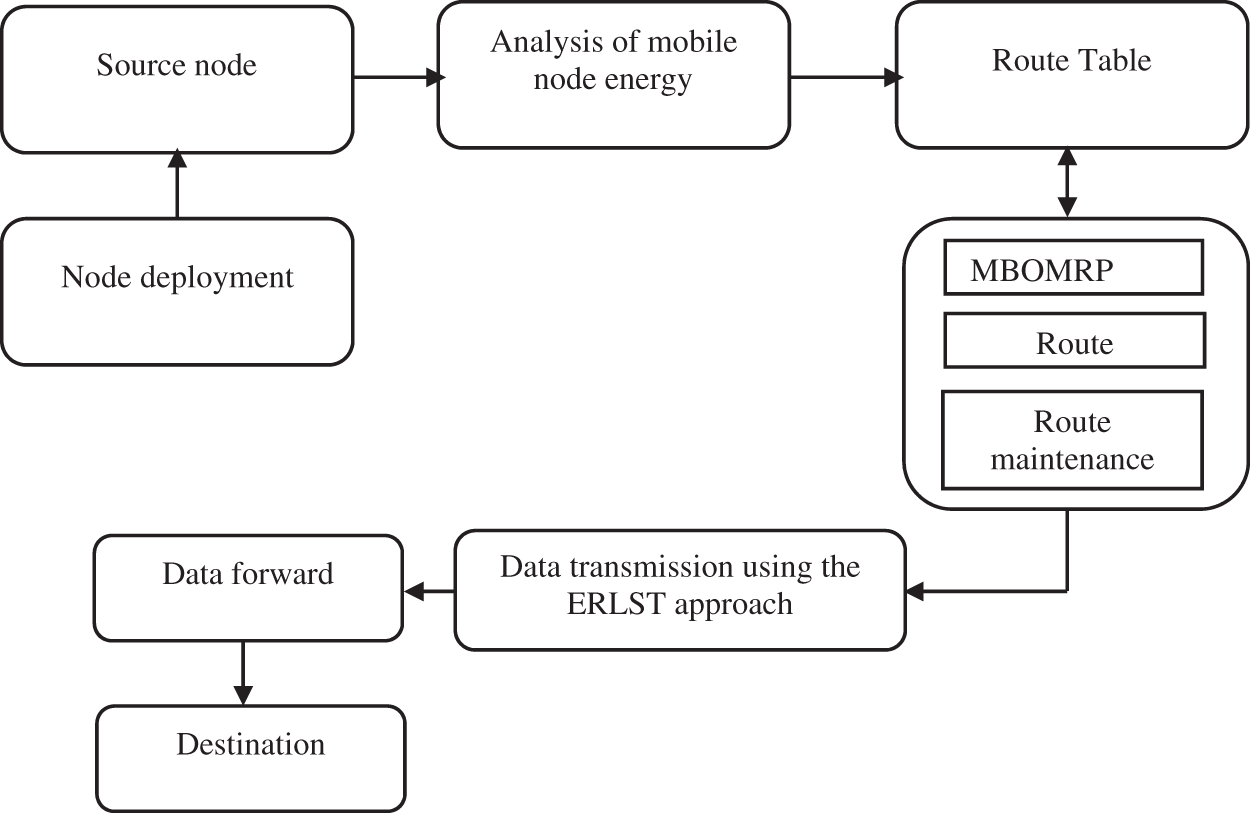
Figure 1: Architecture diagram for improving QoS performance
Mobile node energy is beneficial for communication in MANET. When the source node uses the forwarding node to find the route to the target, the node energy value can be calculated from the reliance value of the adjacent nodes in the route. The energy value of the mobile nodes depends on the node’s trust, mobility, and reliability properties. Node trust values computed from two trust factors, Control packet delivery ratio (
The above equation is used to calculate trust node energy (
The above equation calculates node mobility trust (
The above equation can be calculated node energy consumption process. Let us assume
The above equation is used to compute node reliability trust
Every node keeps information in a routing table containing several routing entries during data transmission. If the packet is destined for a particular node, the packet looks in the local routing table to discover the address of the next neighbour node to the target node. When it touches node x, it looks up the next-hop address by looking at x’s routing table until it reaches its final destination.
Table 1 defines the routing table structure for mobile nodes to maintain the node information. The source code is the start data transmission, then RL contains neighbour node trust, mobility, speed, and the sequence number is node id (n1, n2…..nn).

3.3 Mobility-Based Optimized Multipath Routing Protocol
The proposed Mobility-Based Optimized Multipath Routing Protocol (MBOMRP) algorithm focuses on choosing the traffic-free available route and reducing traffic. Route selection is made considering the lowest remaining energy of the nodes in the path. Each node keeps two independent counters, the node sequence number and the transmission ID. The sender node initiates network flooding by distributing Route Request (RREQ) packets and pauses for Route Response (RREP) packets. RREQ contains sequence id destination address. When the intermediate node x receives the RREQ from the neighbour node y, it checks whether it received a copy of the same RREQ.
Intermediate nodes can only respond if the continuous number of that route is greater than or equal to the route included in RREQ. The proposed MBOMRP is used to discover the route and maintenance to reduce packet loss traffic and select the available route. The proposed approach ensures an actual and reliable path to reduce the consumption of resources based on response rate, delay time, tolerance and delivery rate.
Let us assume that
If there are any changes in the path time, they are calculated as shown in Eq. (6). Let us assume that
where DR refers to delivery rate, and T refers to time. DR should be less than the bottleneck, and T should be greater than the exact arrival interval.
Let us assume that
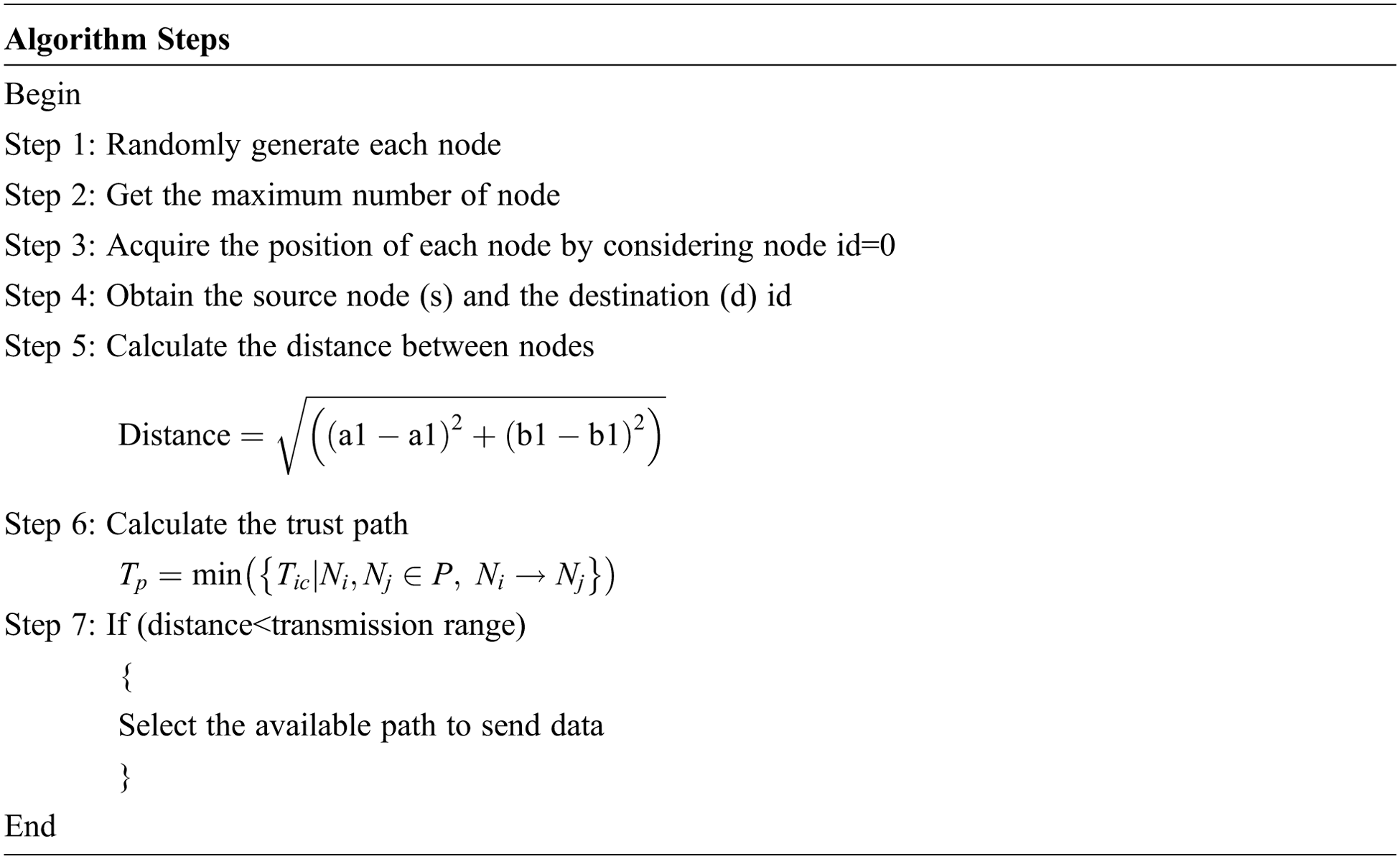
Let us assume that a1, b1, a2, and b2 are the current positions of the node distance calculated.
3.4 Efficient Reliable Link-State Transmission
The proposed ERLST approach is used for communication without packet loss. The proposed aim is to reduce the congestion of bottleneck links by providing these links and reducing the load on burst traffic. However, the proposed continuous data transmission upturns the number of broadcast links that can be used to transmit to some extent simultaneously. The delivery rate indicates the prospect of choosing a relay node during transmission.
Assuming that
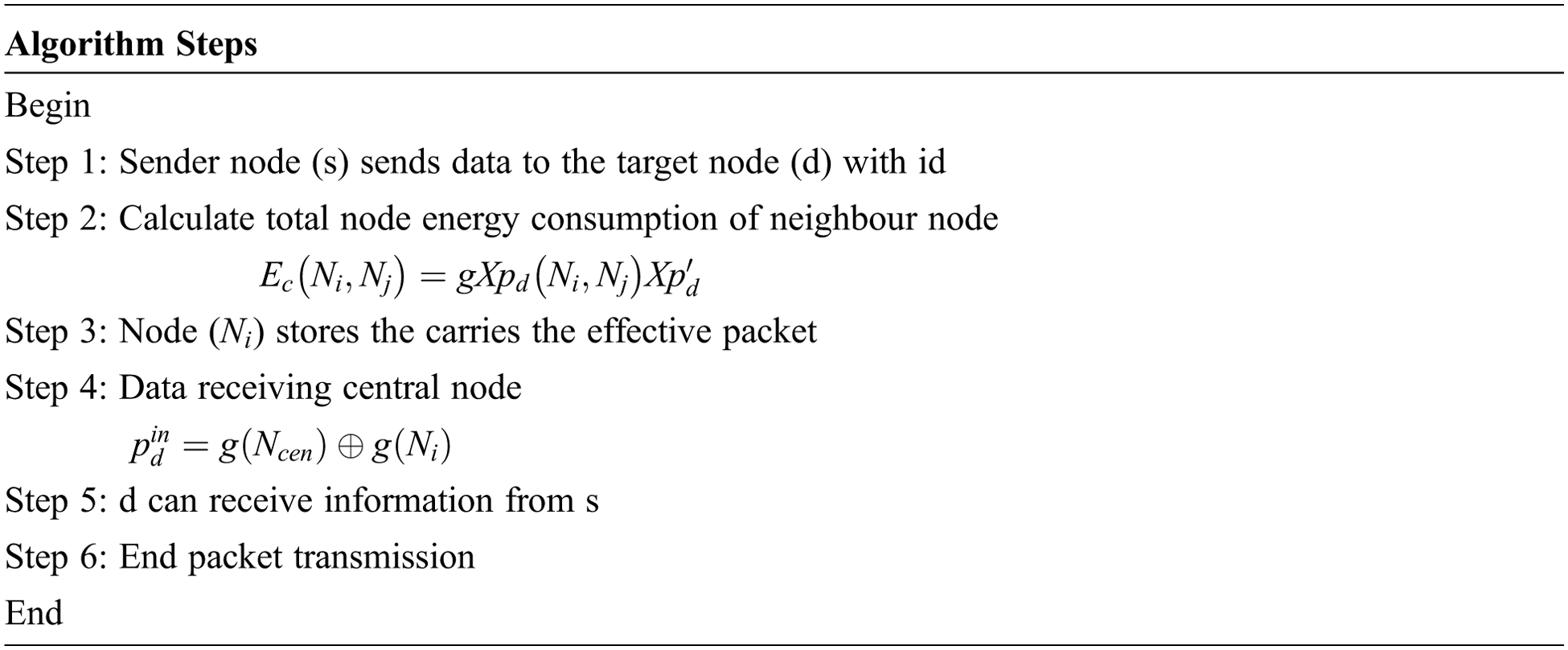
Assume that
This section deliberates the simulation of the proposed implementation compared with existing algorithms that are Multi-Factor QoS (MFQoS), Flexible Route Based Congestion Avoidance (FRBCA) and Particle Swarm Optimization (PSO). Table 2 defines the simulation parameters and their values of the proposed implementation in Network Simulator 2 (NS2) with TCL and C++ language.

The proposed results comparison parameters are PDR, latency, Throughput performance, maximize the network lifetime, energy consumption, and time complexity.
Throughput ensures that message delivery is reliable. Better network connectivity is known to increase throughput performance. Throughput naturally increases as the life of the network increases, present in Table 3.

As presented in Fig. 2, the proposed MBOMRP algorithm performs better throughput results than previous algorithms. The proposed MBOMRP-ERLST framework’s throughput result is 98%; the existing FRBCA method has 89%. Distributed Route-Aggregation (DRA) algorithm has 80%.
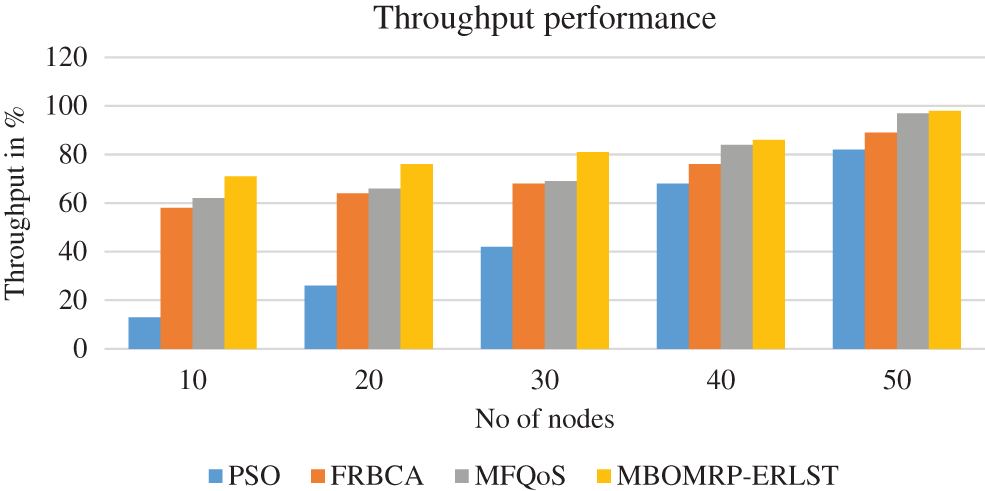
Figure 2: Analysis of throughput performance
The PDR performance ratio in our proposed algorithm comparison result is shown in Table 4.

The PDR ratio in our proposed framework, as shown in Fig. 3, provides high performance among the other algorithms. The proposed MBOMRP-ERLST obtained PDR result is 99%; likewise, the existing algorithm MFQoS algorithm provides throughput performance has 98%, PSO algorithm provide throughput result is 73%, FRBCA algorithm PDR performance has 83%.

Figure 3: Impact of PDR performance
Analysis of energy consumption performance results presents in Table 5. The proposed algorithm gives low energy consumption compared to the previous algorithm.

The analysis of energy consumption performance is present in Fig. 4. The proposed MBOMRP-ERLST algorithm achieves 54%, the existing FRBCA algorithm has 75%, and the PSO algorithm has 78%.
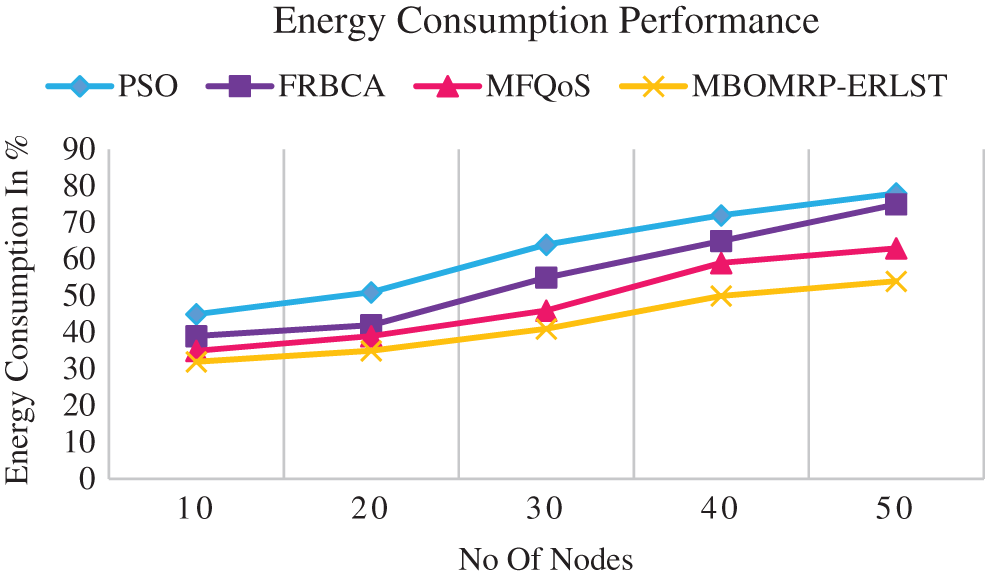
Figure 4: Analysis of energy consumption performance
Table 6 presents the network lifetime in milliseconds. The proposed MBOMRP-ERLST algorithm delivers better result performance compared to the previous algorithm.

The proposed algorithm gives better performance than previous approaches, as shown in Fig. 5. The proposed algorithm obtained network lifetime performance is 149 ms; likewise, the existing algorithm is MFQoS algorithm received network lifetime performance is 134 ms, FRBCA algorithm obtained network lifetime performance is 122 ms and PSO algorithm obtained network lifetime performance is 56 ms.
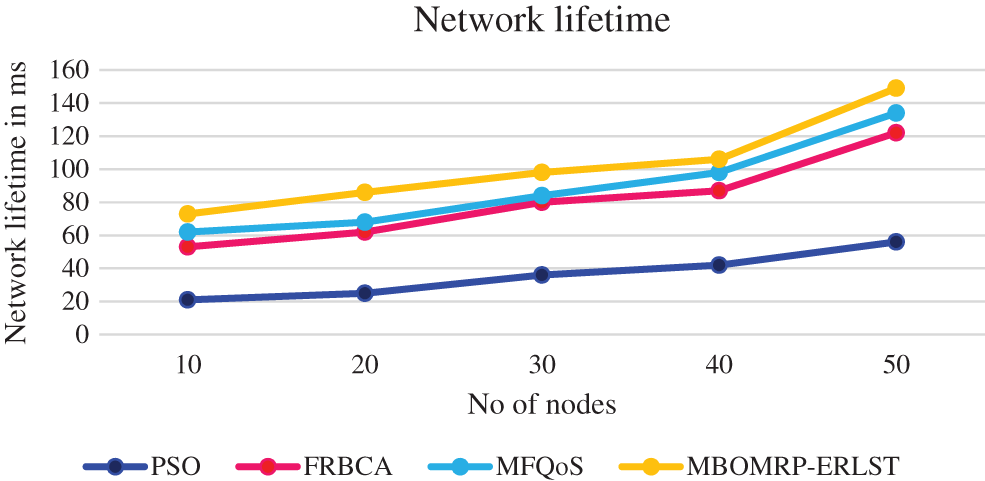
Figure 5: Impact of network lifetime performance
Table 7 describes the impact of Latency performance on the proposed and previous methods judgement results. The proposed MBOMRP algorithm provides low time latency performance than the previous algorithm.

The impact of latency performance graph results is shown in Fig. 6. The proposed algorithm MBOMRP-ERLST has 5.9 ms; similarly, the exiting algorithm MFQoS algorithm latency has 6.5 ms, FRBCA 9.2 ms, and PSO latency has 9.4 ms.
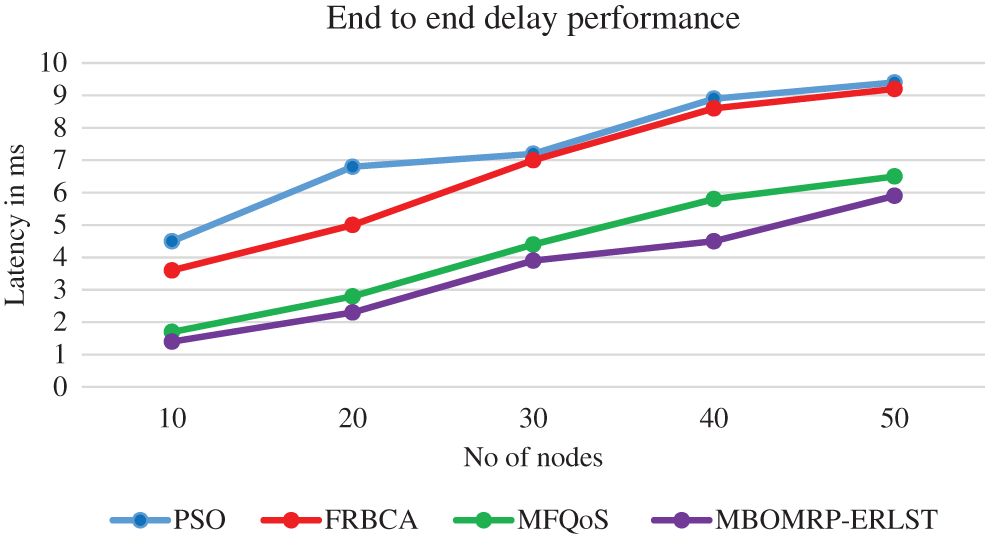
Figure 6: Impact of Latency performance
To conclude this paper, Mobility-Based Optimized Multipath Routing Protocol and an Efficient Reliable Link-State Transmission (MBOMRP-ERLST) algorithm are proposed to minimize link failure and improve QoS performance. The proposed MBOMRP is used for route discovery and maintenance to avoid traffic and sleeping nodes efficiently. ERLST algorithm is used for efficient data transmission to improve QoS parameters such as throughput PDR and minimize latency performance. The proposed MBOMRP-ERLST framework focus on selecting available paths with high residual energy and low energy usage. This avoids link failures due to node energy exhaustion, extending network life and improving MANET energy performance. The proposed algorithm provides results: throughput result is 98%, PDR result is 99%, PDR result is 99%, energy consumption performance is 53%, and network lifetime performance is 149 ms. Hence the proposed algorithm enhances the QoS network lifetime and reduces the link failure energy consumption compared to other methods.
Funding Statement: The authors received no specific funding for this study.
Conflicts of Interest: The authors declare they have no conflicts of interest to report regarding the present study.
References
1. S. B. Kulkarni and B. N. Yuvaraju, “Node connectivity, energy and bandwidth aware clustering routing algorithm for real-time traffic multicasting in MANET,” in IEEE Int. Advance Computing Conf. (IACC), Banglore, India, pp. 760–763, 2015. [Google Scholar]
2. J. Bai, Y. Sun, C. Phillips and Y. Cao, “Toward constructive relay-based cooperative routing in MANETs,” IEEE Systems Journal, vol. 12, no. 2, pp. 1743–1754, 2018. [Google Scholar]
3. T. Zhang, S. Zhao and B. Cheng, “Multipath routing and MPTCP-based data delivery over MANETs,” IEEE Access, vol. 8, pp. 32652–32673, 2020. [Google Scholar]
4. P. K. Pattnaik, B. K. Panda and M. Sain, “Design of novel mobility and obstacle-aware algorithm for optimal MANET routing,” IEEE Access, vol. 9, pp. 110648–110657, 2021. [Google Scholar]
5. U. Srilakshmi, N. Veeraiah, Y. Alotaibi, S. A. Alghamdi, O. I. Khalaf et al., “An improved hybrid secure multipath routing protocol for MANET,” IEEE Access, vol. 9, pp. 163043–163053, 2021. [Google Scholar]
6. C. Priyadharshini and K. ThamaraiRubini, “PSO based route lifetime prediction algorithm for maximizing network lifetime in MANET,” in Int. Conf. on Recent Trends in Information Technology, Chennai, India, pp. 270–275, 2012. [Google Scholar]
7. A. Taha, R. Alsaqour, M. Uddin, M. Abdelhaq and T. Saba, “Energy efficient multipath routing protocol for mobile ad-hoc network using the fitness function,” IEEE Access, vol. 5, pp. 10369–10381, 2017. [Google Scholar]
8. Y. Song, H. Luo, S. Pi, C. Gui and B. Sun, “Graph kernel based clustering algorithm in MANETs,” IEEE Access, vol. 8, pp. 107650–107660, 2020. [Google Scholar]
9. P. Zhao, X. Yang, W. Yu and X. Fu, “A loose-virtual-clustering-based routing for power heterogeneous MANETs,” IEEE Transactions on Vehicular Technology, vol. 62, no. 5, pp. 2290–2302, 2013. [Google Scholar]
10. F. Aftab, Z. Zhang and A. Ahmad, “Self-organization based clustering in MANETs using zone based group mobility,” IEEE Access, vol. 5, pp. 27464–27476, 2017. [Google Scholar]
11. H. Bhattacharya, S. Chattopadhyay and M. Chattopadhyay, “LP-ESAR: Lifetime prediction based energy saving routing algorithm for MANET,” in The 8th Int. Conf. on Software, Knowledge, Information Management and Applications (SKIMA 2014), Dhaka, Bangladesh, pp. 1–7, 2014. [Google Scholar]
12. F. De Rango, F. Guerriero and P. Fazio, “Link-stability and energy aware routing protocol in distributed wireless networks,” IEEE Transactions on Parallel and Distributed Systems, vol. 23, no. 4, pp. 713–726, 2012. [Google Scholar]
13. C. Nishanthini and G. Rajkumar, “Congestion avoidance through cooperative routing in MANETs,” in Int. Conf. on Information Communication and Embedded Systems (ICICES), Chennai, India, pp. 1169–1172, 2013. [Google Scholar]
14. S. Hao, H. Zhang and M. Song, “A stable and energy-efficient routing algorithm based on learning automata theory for MANET,” Journal of Communications and Information Networks, vol. 3, no. 2, pp. 43–57, 2018. [Google Scholar]
15. T. Lu and J. Zhu, “Genetic algorithm for energy-efficient QoS multicast routing,” IEEE Communications Letters, vol. 17, no. 1, pp. 31–34, 2013. [Google Scholar]
16. A. Bhardwaj and H. El-Ocla, “Multipath routing protocol using genetic algorithm in mobile ad hoc networks,” IEEE Access, vol. 8, pp. 177534–177548, 2020. [Google Scholar]
17. S. Sarhan and S. Sarhan, “Elephant herding optimization ad hoc on-demand multipath distance vector routing protocol for MANET,” IEEE Access, vol. 9, pp. 39489–39499, 2021. [Google Scholar]
18. Z. Chen, W. Zhou, S. Wu and L. Cheng, “An adaptive on-demand multipath routing protocol with QoS support for high-speed MANET,” IEEE Access, vol. 8, pp. 44760–44773, 2020. [Google Scholar]
19. F. Hazzaa, S. Yousef, N. H. Ali and E. Sanchez, “The effect of nodes density on real time traffic in mobile ad hoc network,” in IEEE 12th Int. Conf. on Global Security, Safety and Sustainability (ICGS3), London, UK, pp. 209–212, 2019. [Google Scholar]
20. Y. H. Robinson, E. G. Julie, K. Saravanan, L. H. Son, R. Kumar et al., “Link-disjoint multipath routing for network traffic overload handling in mobile ad-hoc networks,” IEEE Access, vol. 7, pp. 143312–143323, 2019. [Google Scholar]
Cite This Article
 Copyright © 2023 The Author(s). Published by Tech Science Press.
Copyright © 2023 The Author(s). Published by Tech Science Press.This work is licensed under a Creative Commons Attribution 4.0 International License , which permits unrestricted use, distribution, and reproduction in any medium, provided the original work is properly cited.


 Submit a Paper
Submit a Paper Propose a Special lssue
Propose a Special lssue View Full Text
View Full Text Download PDF
Download PDF Downloads
Downloads
 Citation Tools
Citation Tools